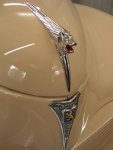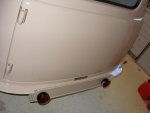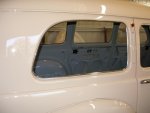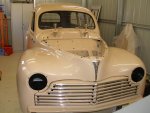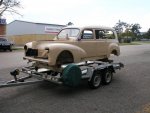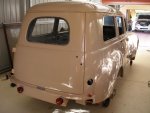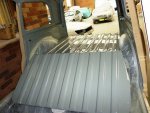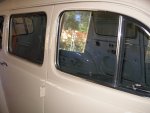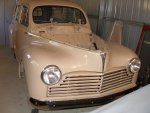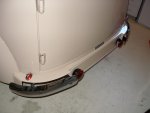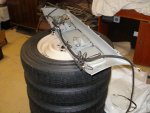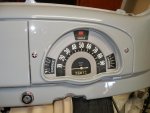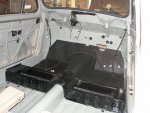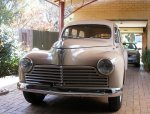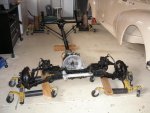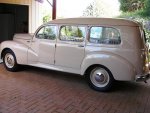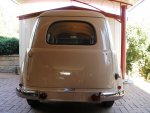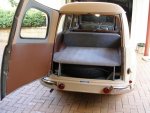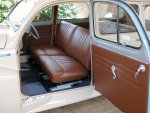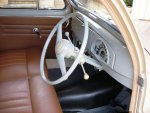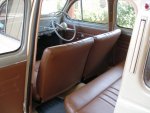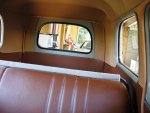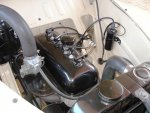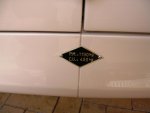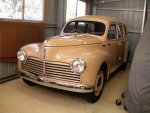Now having great fun screwing on all the new and shiny bits. Pity about the greasy bits still lying about the shed. However, I do have an excuse as painting weather in Canberra is slipping away with the dead hand of winter upon us. However, refitting the glass and sundry rubber bits should keep me occupied for some time.
It is great to see a 203 without pimply door handles and mascot. Yes, they do exist, even though I had to have the new old stock door handles replated in order to get rid of the scratches and sub-standard original chrome. I picked the mascot up in a Dijon junk shop. It had minimal pimpling but still required replating.
I repolished the stainless steel grille bars and window surrounds using a kit from Bunnies - grey buffing soap with a sisal wheel to remove scratches and white with a calico wheel to polish, finishing with Autosol for good measure. This is a monotonous task but the results have been worth it.
The back end now looks better with the tailgate ding removed and proper Frankani 180 tail lights fitted. The bumpers are still with the plater but should set off the whole thing.
A set of 185x16 Michelin X tyres have now arrived from Longstones at a rather advantageous price - free shipping and air delivery from England in six days!
More photos attached.
It is great to see a 203 without pimply door handles and mascot. Yes, they do exist, even though I had to have the new old stock door handles replated in order to get rid of the scratches and sub-standard original chrome. I picked the mascot up in a Dijon junk shop. It had minimal pimpling but still required replating.
I repolished the stainless steel grille bars and window surrounds using a kit from Bunnies - grey buffing soap with a sisal wheel to remove scratches and white with a calico wheel to polish, finishing with Autosol for good measure. This is a monotonous task but the results have been worth it.
The back end now looks better with the tailgate ding removed and proper Frankani 180 tail lights fitted. The bumpers are still with the plater but should set off the whole thing.
A set of 185x16 Michelin X tyres have now arrived from Longstones at a rather advantageous price - free shipping and air delivery from England in six days!
More photos attached.

